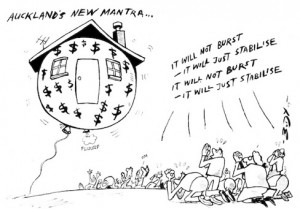Executive compensation is set by managers themselves to maximise their own pay, rather than by boards on behalf of shareholders. Indeed, many commentators argue that executives’ pay schemes were major contributors to the financial crisis, encouraging them to take on too much risk and manage their company for short-term profit. In response, President Obama has proposed new executive compensation rules for firms seeking government aid. However, several critics have argued that the recent changes are politically motivated and focus on the level of pay, rather than the incentive structures (e.g. the relative amount of cash versus shares), which have the greatest economic impact.
Existing schemes have two main problems. First, stock and options typically have short vesting periods, allowing executives to “cash out” early. For example, Angelo Mozilo, the former CEO of Countrywide Financial, made $129 million from stock sales in the twelve months prior to the start of the subprime crisis. This encourages managers to pump up the short-term stock price at the expense of long-run value – for instance by originating risky loans, scrapping investment projects, or manipulating earnings – because they can liquidate their holdings before the long-run damage appears. Long-term incentives must be provided for the manager to maximise long-term value, which we call the “long-horizon principle.”
Second, current schemes fail to keep pace with a firm’s changing conditions. If a company’s stock price plummets, stock options are close to worthless and have little incentive effect – precisely at the time when managerial effort is particularly critical. This problem may still exist even if the executive has only shares and no options. Consider a CEO who is paid $4 million in cash and $6 million in stock. If the share price halves, his stock is now worth $3 million. Exerting effort to improve firm value by 1% now increases his pay by only $30,000 rather than $60,000 and may provide insufficient motivation. To maintain incentives, the CEO must be forced to hold more shares after firm value declines. Our research has shown that, to motivate a manager, a given percentage increase in firm value (say 10%) must generate a sufficiently high percentage increase in pay (say 6%). In the above example, this is achieved by ensuring that, at all times, 60% of the manager’s pay is stock. We call this the “constant percentage principle.” The appropriate proportion will vary across firms depending on their industry and life cycle, but we estimate 60% as a ballpark number for the average firm.
Alex Edmans and Xavier Cabaix write that two principles should govern executive pay: Rebalancing to address the constant percentage principle and gradual vesting to satisfy the long-horizon principle. Executive Compensation








 Kathleen Kelley Reardon asks: Can you manage at work without politics? The answer to that question is, probably not. Wherever people come together seeking goals – whether the same or different ones – and especially where there is competition for scarce resources, politics is there. Political arenas run along a continuum from minimally to highly and even pathologically political. The character of the arena in which you work dictates the extent to which political acumen becomes a necessity.The political landscape where most of us work shifts over time. While it may be possible to remain a political purist (at least for a while) in some jobs in certain organizations, it is risky to wait around until politics reaches a point beyond your expertise.The more effective route is to prepare for politics. Keep in mind that not all forms of politics are devious or underhanded. Some political skills are actually no more than good people skills, like interpersonal sensitivity: knowing when to bring up which topics, when to push for something you believe is important, managing conflict to avoid unnecessary flare-ups, and causing others to feel good about working with you.Additional, relatively basic and constructive forms of political know-how include:
Kathleen Kelley Reardon asks: Can you manage at work without politics? The answer to that question is, probably not. Wherever people come together seeking goals – whether the same or different ones – and especially where there is competition for scarce resources, politics is there. Political arenas run along a continuum from minimally to highly and even pathologically political. The character of the arena in which you work dictates the extent to which political acumen becomes a necessity.The political landscape where most of us work shifts over time. While it may be possible to remain a political purist (at least for a while) in some jobs in certain organizations, it is risky to wait around until politics reaches a point beyond your expertise.The more effective route is to prepare for politics. Keep in mind that not all forms of politics are devious or underhanded. Some political skills are actually no more than good people skills, like interpersonal sensitivity: knowing when to bring up which topics, when to push for something you believe is important, managing conflict to avoid unnecessary flare-ups, and causing others to feel good about working with you.Additional, relatively basic and constructive forms of political know-how include:


